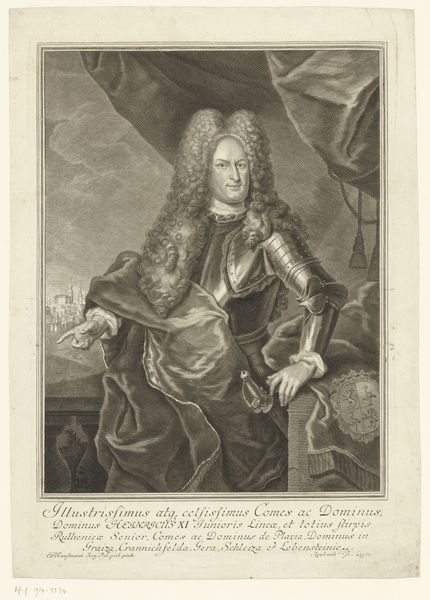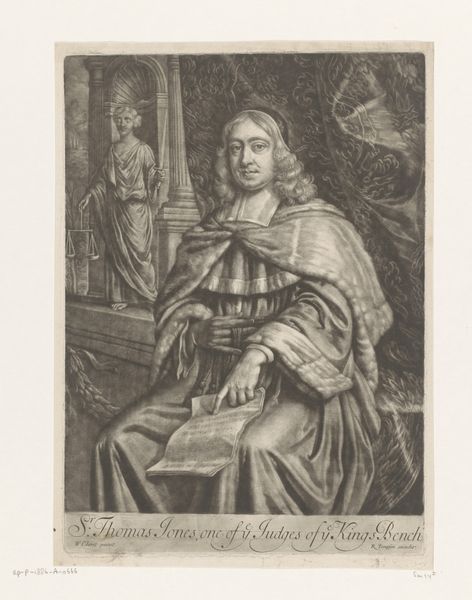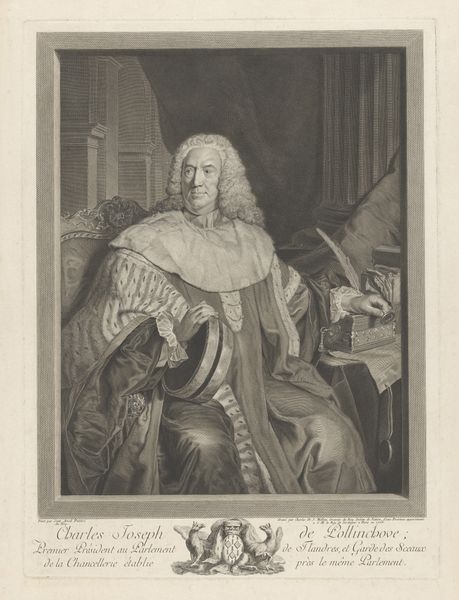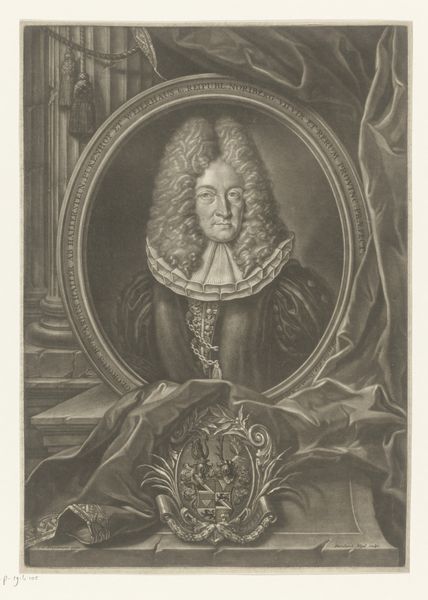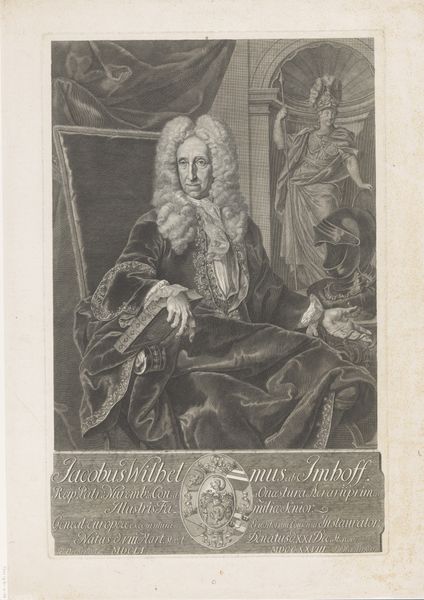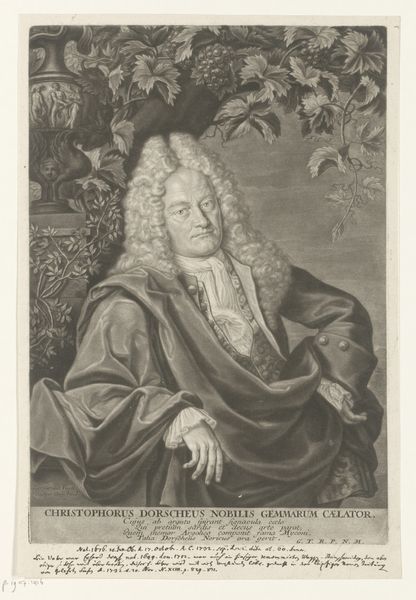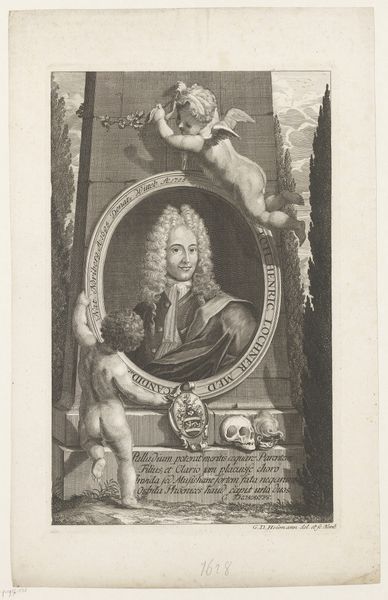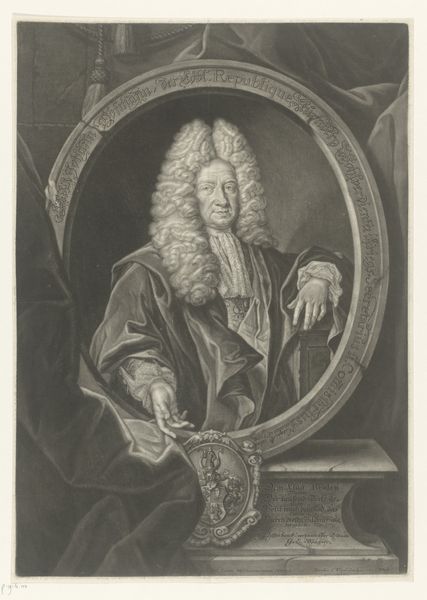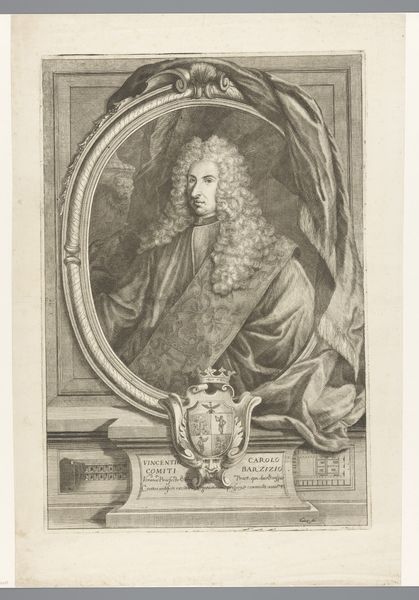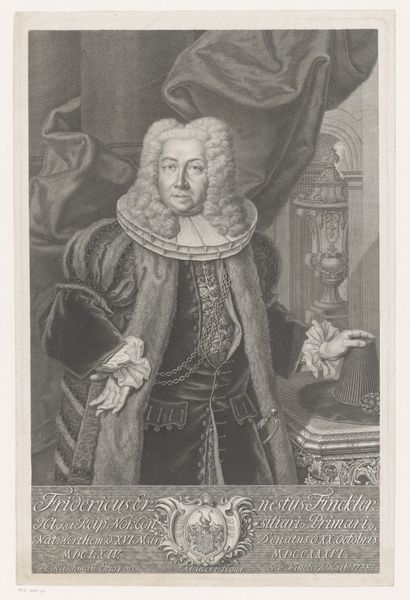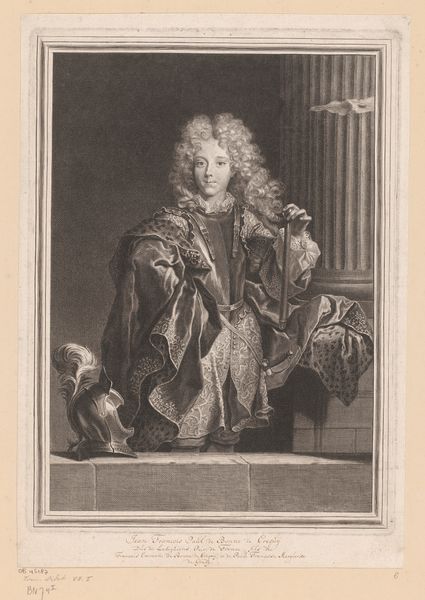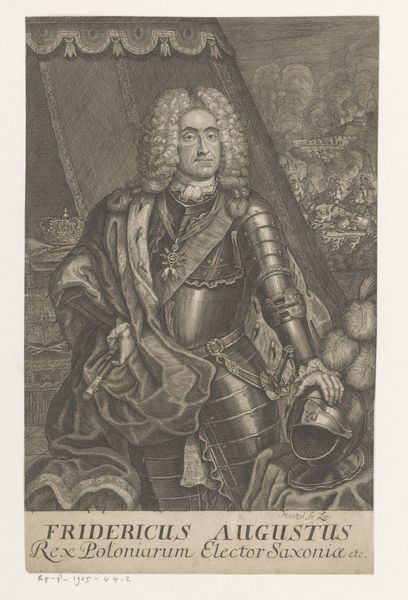
engraving
#
portrait
#
baroque
#
classicism
#
history-painting
#
engraving
Dimensions: height 273 mm, width 170 mm
Copyright: Rijks Museum: Open Domain
Bernhard Vogel created this portrait of Wolfgang Hannibal von Schrattenbach in the late 17th or early 18th century. Vogel captures Schrattenbach, a high-ranking clergyman, amidst symbols of power and piety. Consider the era in which this portrait was made, a time of rigid social hierarchies. Schrattenbach's identity is carefully constructed through his vestments, the trappings of his office, and the heraldry displayed at the bottom of the engraving. These symbols, however, are only part of the story. The portrait also conveys a sense of the individual, particularly in the subject's gaze, which seems to engage directly with the viewer. What does it mean to reconcile personal identity with institutional power? How does Vogel's portrait negotiate the tensions between the man and his office? Perhaps the Latin inscription offers a clue: "Thus piety, thus sincere... thus may love of religion be painted." It suggests that true representation lies not merely in outward appearances, but in the inner qualities of faith and devotion.
Comments
No comments
Be the first to comment and join the conversation on the ultimate creative platform.
